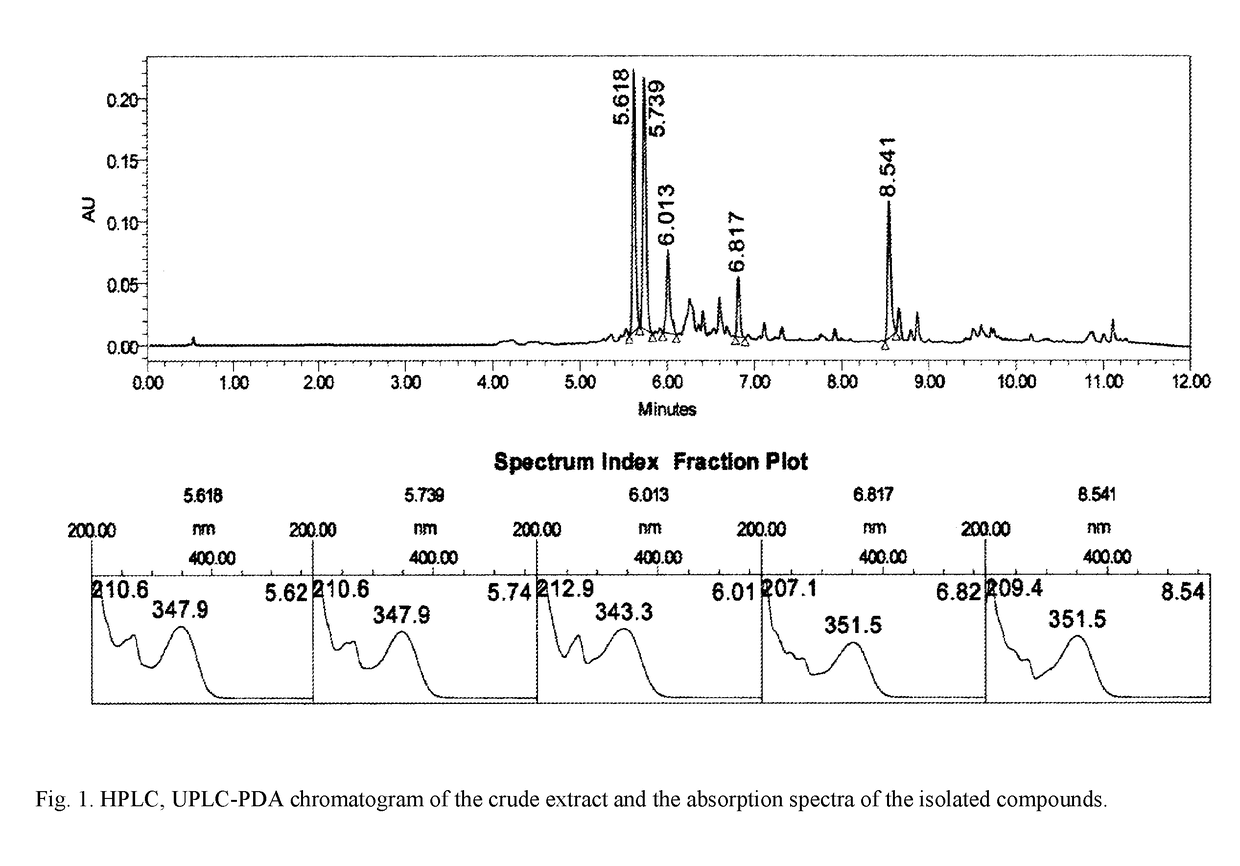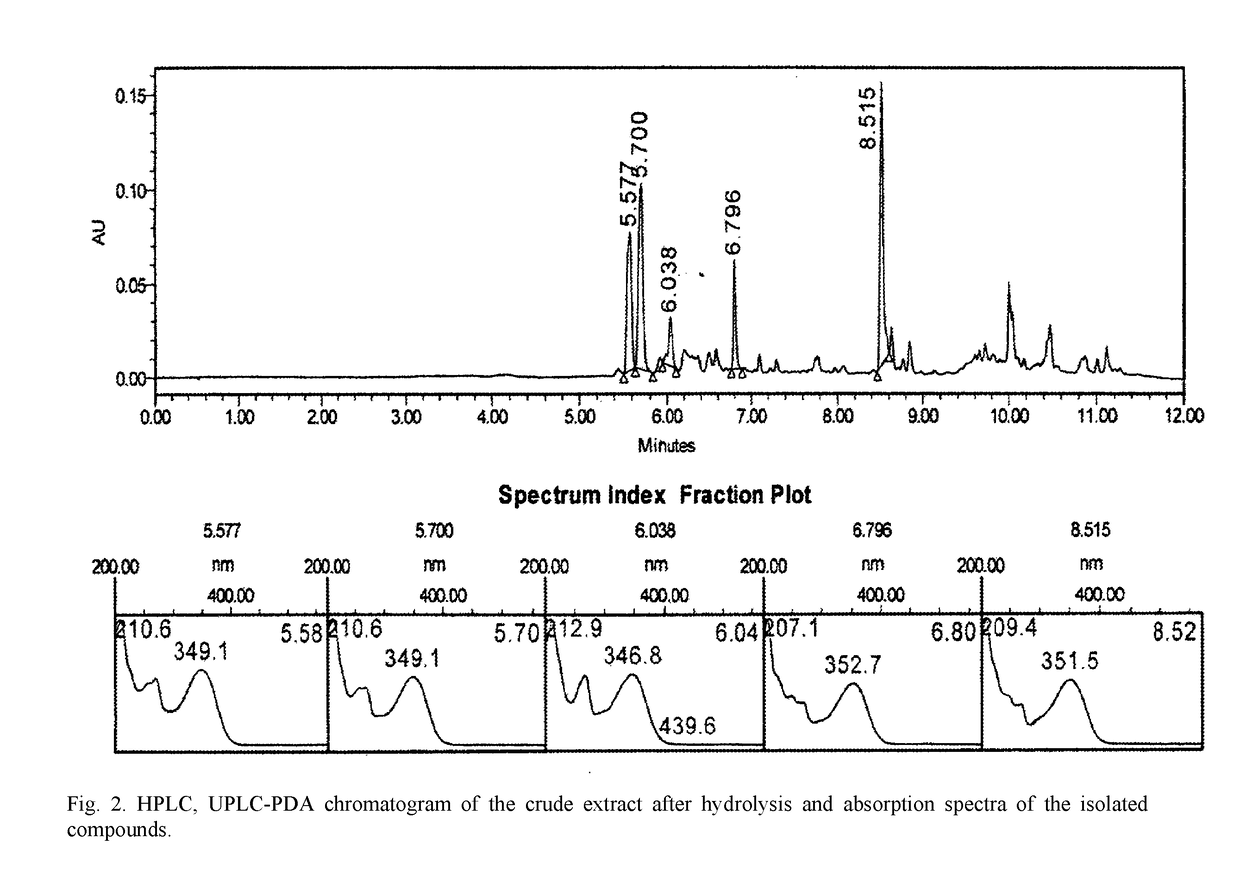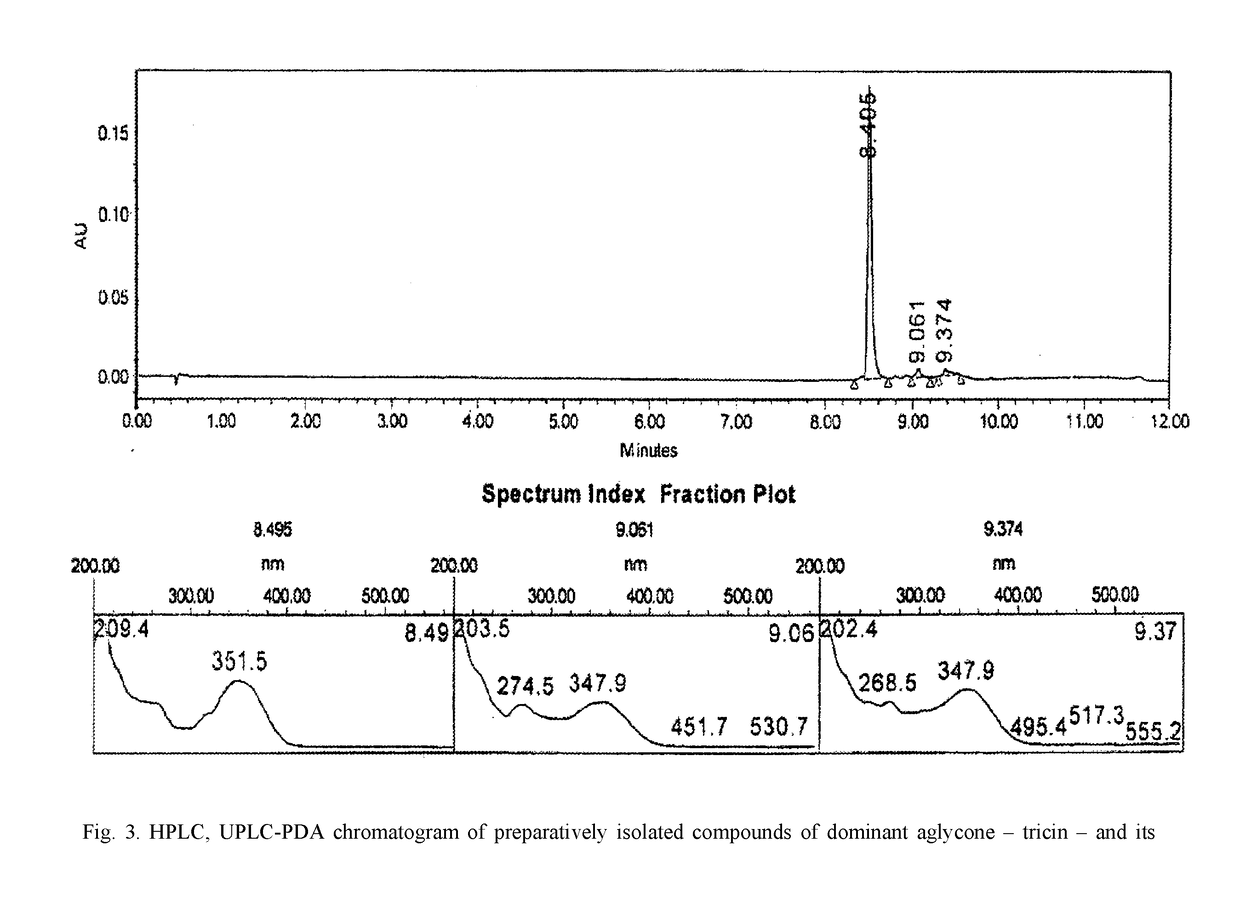Plant-based biologically active substance having a polypharmacological effect
a biologically active substance and polypharmacological technology, applied in the field of medicine, can solve problems such as limited use of biologically active substances
- Summary
- Abstract
- Description
- Claims
- Application Information
AI Technical Summary
Benefits of technology
Problems solved by technology
Method used
Image
Examples
example 2
[0099]Determination of Anti-Influenza Activity in In Vitro Experiments
[0100]The influenza virus of A / FM, 1 / 47 (H1N1) strain, infectious titer of allantoic culture—6.0 lg EID50 / 0.2 ml, was used.
[0101]For in vitro determination of antiviral activity of extracts, one day passaged culture of MDCK cells (renal cells from dog) with confluent layer was used. Cells were cultivated in plates on medium of RPMI-1640+10% fetal serum (Nunclon, Surface, Denmark) at temperature 37° C. in thermostat with CO2 feed. For enhance of cell sensitivity to contamination with the influenza virus, the processing with trypsin was performed. Trypsin stock solution was prepared by addition of up to 3 g of weighted amount of enzyme into 3 ml of DMEM medium. Cells were washed with this solution for three times—50 ml into each well.
[0102]Growth medium was removed, different concentrations of model extracts were added into cells and the influenza virus was applied in dose of 100 TCD50.
[0103]Cultures were incubated ...
example 3
[0107]Investigation of Activity of Extracts Against the Hepatitis C Virus (HCV).
[0108]The bovine viral diarrhea virus (BVDV) was chosen as the surrogate HCV virus as it is the test-model of the hepatitis C virus.
[0109]Antiviral activity was investigated in MDBK culture, which was processed with the use of different dilutions of extracts and where BVDV in dose of 100 TCD50 was added. Cultures were incubated in thermostat till appearance of the specific cytopathic effect of the virus in control, and then the infectious titer of the virus was determined in the cultural medium.
[0110]Results are provided in table 12.
TABLE 12Results of the effect of experimental extracts on reproductionof the bovine viral diarrhea virus and determination of minimalactive concentration (MAC) in MDBK cell culture.Names of extracts and their effect on the infectioustiter of the surrogate HCV virus inlg ID50Concentration ofCrudeExtract ofExtract offlavonoids in dilutedextractDeschampsiaCalamagrostisextracts, ...
example 4
[0115]Interferon Inducing Activity of Model Extracts In Vivo.
[0116]Interferon inducing activity was examined in in vivo experiments in white outbred mice, that underwent intraperitoneal administration of extracts (0.1 ml) in concentration of 55.5 mcg / kg. After 24 hours mice were removed from experiment through euthanasia, and interferon (IFN) was determined in their blood serum with commonly used method of inhibition of cytopathic action (CPA) of the vesicular stomatitis virus (VSV) in homological tissue culture L929. The type of interferon was determined by an acidic sensitivity marker. For this purpose, blood serum was divided into two same parts. In one of them pH of liquid was made up to 2.0, using 4 N HCl, and left for 24 hours in 4° C., then pH of liquid was restored up to 7.2 using 4 N NaOH.
[0117]Results of performed experiment are provided in table 14.
TABLE 14Interferon levels in blood serum of mice thatunderwent administration of model extracts.Units of interferon activity ...
PUM
| Property | Measurement | Unit |
|---|---|---|
| density | aaaaa | aaaaa |
| density | aaaaa | aaaaa |
| density | aaaaa | aaaaa |
Abstract
Description
Claims
Application Information
 Login to View More
Login to View More - R&D
- Intellectual Property
- Life Sciences
- Materials
- Tech Scout
- Unparalleled Data Quality
- Higher Quality Content
- 60% Fewer Hallucinations
Browse by: Latest US Patents, China's latest patents, Technical Efficacy Thesaurus, Application Domain, Technology Topic, Popular Technical Reports.
© 2025 PatSnap. All rights reserved.Legal|Privacy policy|Modern Slavery Act Transparency Statement|Sitemap|About US| Contact US: help@patsnap.com



